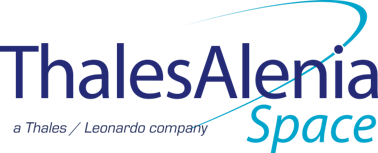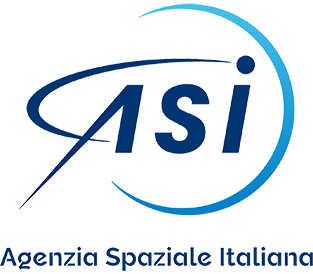OrbitalAI IMAGIN-e
Challenge closed
Overview
Space mission awaits: Be a pioneer for in-orbit EO data processing and drive progress on Earth. Join today!
Ever wondered about being part of a space mission? OrbitalAI is here to make that possible. We offer you an exclusive chance to embark on a remarkable journey that explores the boundless potential of in-orbit data processing for Earth's sustainability. Whether you're a tech aficionado, a creative thinker, or a scientific enthusiast, we welcome individuals from diverse backgrounds to join us in advancing the future of Earth observation (EO).
Imagine developing groundbreaking solutions that harness the power of AI and Earth observation data, propelling progress in business, industry, or science. At OrbitalAI, we believe in the collective brilliance of minds coming together to shape a better tomorrow. If you're selected as one of the 10 finalist teams, you'll have the fantastic opportunity to collaborate with top industry experts, refining your solutions and preparing it for the ultimate launch into space.
This isn't just any opportunity—it's a chance to leave a significant mark on the quest for Earth's sustainability. By becoming a part of our global initiative, you'll play a vital role in advancing the frontiers of science and protecting our precious planet. Join us and set your imagination free! Don't miss this once-in-a-lifetime opportunity to be part of something truly important.
The big prize
At the end of the challenge 10 teams will be selected. Those ten teams will work closely with the space mission experts and will go through a second selection that will determine the best two teams that will eventually have their solutions launched into space.
Besides the chance of having their solution onboard a satellite, we will reward 10 teams with various prizes ranging from invitations for visiting researchers to vouchers for computation or access to premium data. Stay tuned as we are going to announce the complete pool of prizes soon.

Context
The European Space Agency (ESA), in partnership with Microsoft and Thales Alenia Space (TAS), is inviting individuals and teams to participate in the #OrbitalAI Challenge IMAGIN-e track (ISS Mounted Accessible Global Imaging Nod-e).
In late 2023, an edge compute testbed will be launched to the International Space Station (ISS). This testbed will have visible and hyperspectral sensors to demonstrate and validate technologies for multiple remote-sensing applications. By employing advanced AI techniques to process data directly onboard spacecraft, we can unlock the immense potential of onboard intelligence for Earth Observation. This approach promises enhanced efficiency, agility, autonomy, and reconfigurability in EO. Onboard processing in satellites is revolutionising space data by enabling faster and more efficient data transmission, reducing the dependence on ground-based processing, and enabling real-time decision-making.
In EO, end users require valuable insights and optimal decisions with minimal delay. That's why significant research efforts have been dedicated to exploring onboard intelligence for EO applications, such as early detection of natural disasters, vessel incidents, and gas leaks. Onboard intelligence empowers us to identify low-quality EO data, such as cloud-covered satellite images or remote sensing images with limited relevant information and discard them. This not only saves costs but also minimizes the need for data transmission to Earth.
As an example, Deeper Vision, an Earth Observation data analytics software by Thales Alenia Space, is one of the software intended to be run onboard the ISS using Space Edge Computing capacities. This app is basically an image analyst that uses artificial intelligence to process and analyse huge volumes of Earth observation imagery, automatically detect how features evolve over time and monitor areas of interest, such as changes, anomalies and similarities. If you want to gain more knowledge about the IMAGIN-e space mission, please refer to the scientific notice.
That one examples is just the tip of the iceberg, and we can assure you that with your input the possibilities are boundless.
If you want to gain more knowledge about this competition and how to build your prototype you can check our training webinars:
- W1 - Ideation training
- W2 - AI for Earth observation application
- W3 - AI model optimisation and prototype building
Who can participate?
Any person, start-up, or large enterprise with an innovative mindset and ideas is invited to join this track of the OrbitalAI Challenge.
Age
All participants must be 18 or older to be eligible to participate in the OrbitalAI Challenge.
Team
Teams must consist of a minimum of 2 and maximum of 5 people.
Geography
Applications will be accepted from anywhere in the world. For full information about the conditions of being part of the top ten winners, check our Rules section.
Important dates
Phase I: The open competition
During Phase I, participants will submit their best solution in the form of a Jupyter Notebook together with a PowerPoint presentation, saved as a .pdf file, and a pitch video of their solution.
After the first phase 10 teams will be selected for the next stage.
The deadline for application is 20 September 2023.
Phase II: Incubation & production release
This phase will start in October 2023.
During the second phase, the selected teams will work on their solution together with Microsoft and Thales Alenia Space. The solution will be integrated with the Microsoft Azure Orbital Space SDK and verified on the conditions and configuration of the hyperspectral camera on the ISS.
At the end of this phase 2 teams will have their solution launched into space.
Final evaluation
Your solution will be judged by a panel of experts against the following criteria:
- Suitability of the solutions for solving societal and/or business problems (25% weighting in scoring).
- Level of creativity and originality (25% weighting in scoring).
- Technical and programmatic feasibility of the implementation (25% weighting in scoring).
- Contribution to Open Science (25% weighting in scoring).
Mission stakeholders
Challenge contributors
The Italian Space Agency (ASI) has provided a complete set of PRISMA (Italian Hyperspectral Mission) data that was used in creating the data simulation for the IMAGIN-e Track. We are grateful for their support and contribution to this exciting challenge.
ESA Φ-lab Challenges is carried out under a programme of, and funded by the European Space Agency (ESA).
Disclaimer: The views expressed on this site shall not be construed to reflect the official opinion of ESA.
Contact Us
Contact



